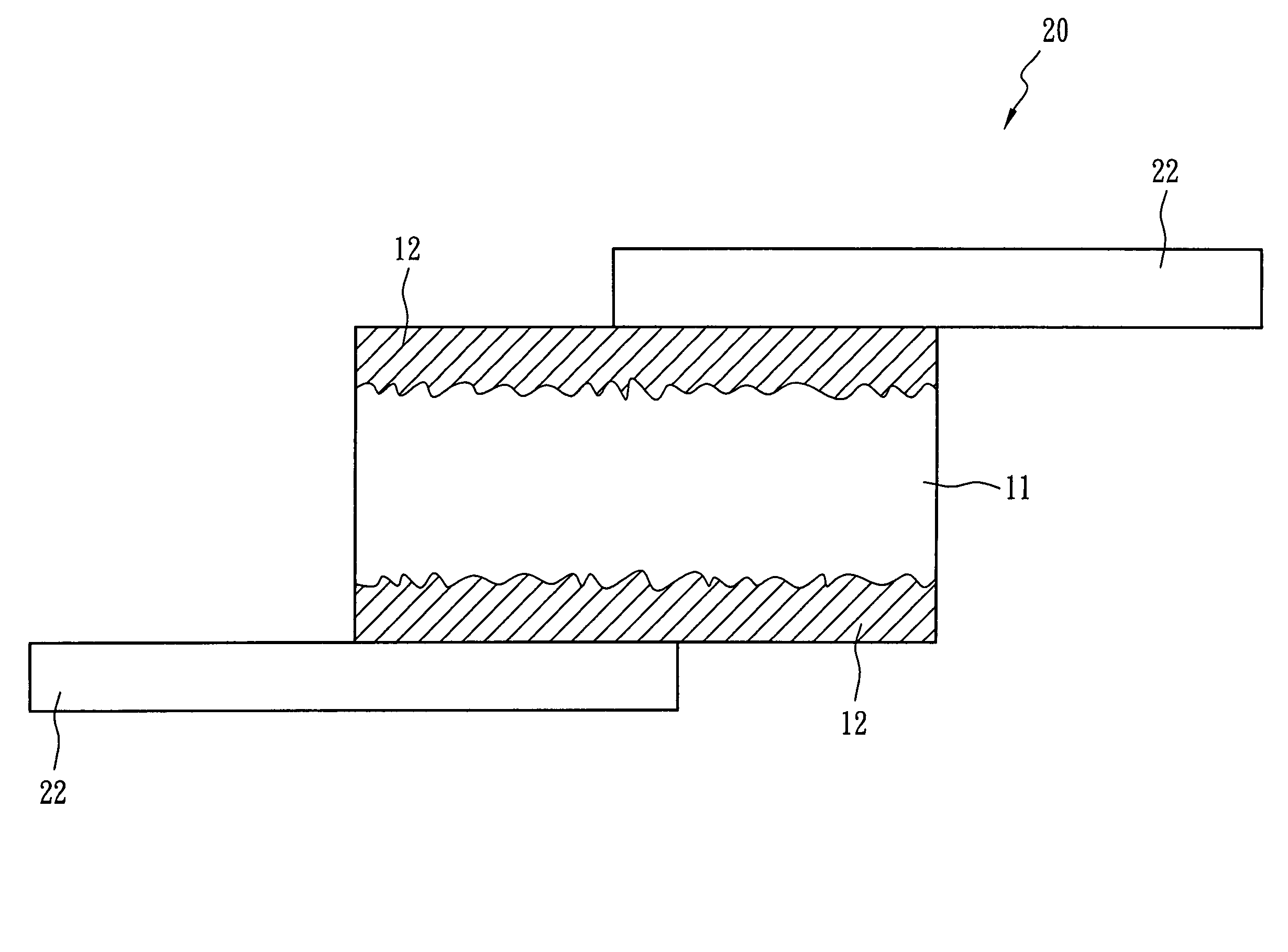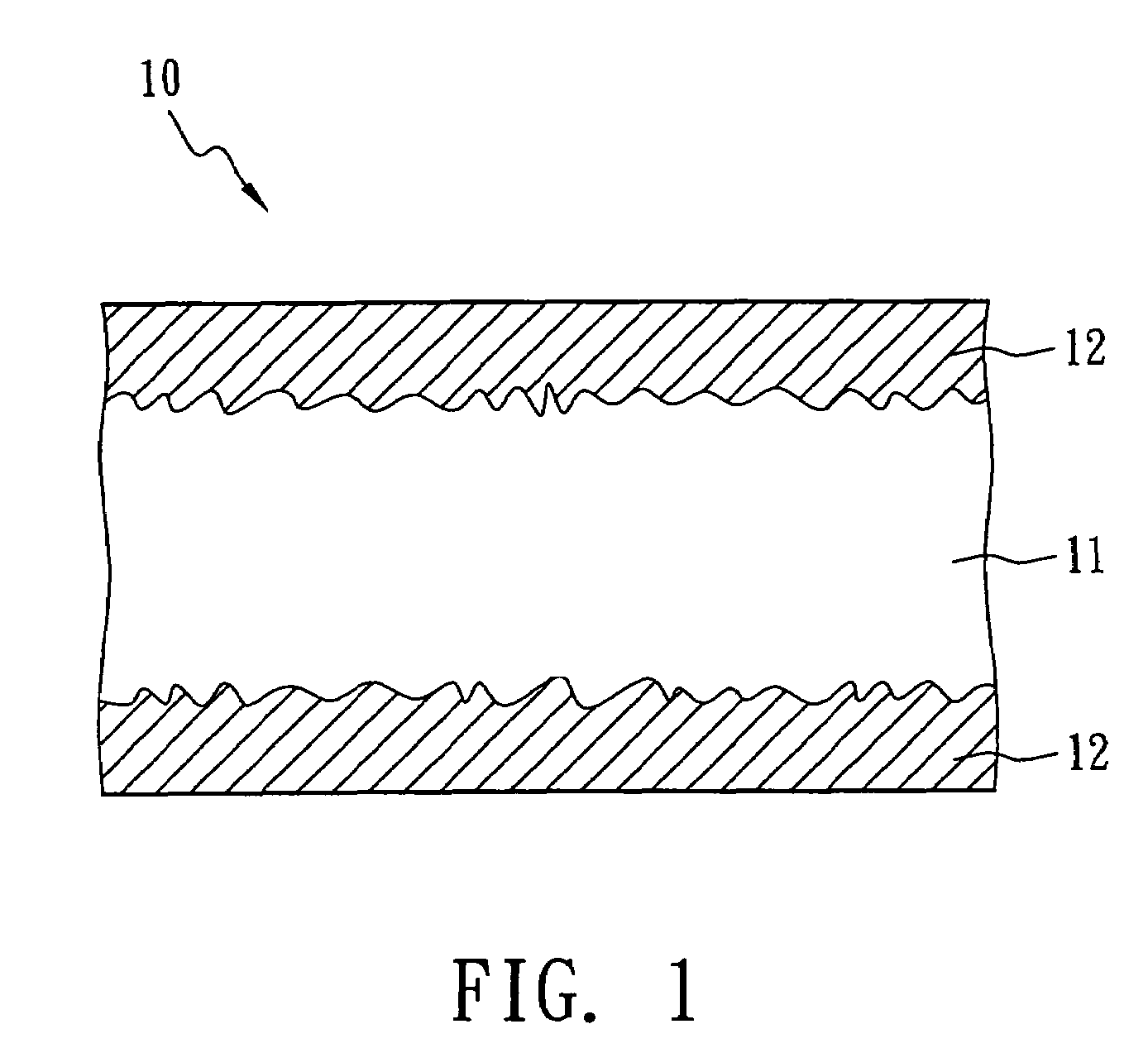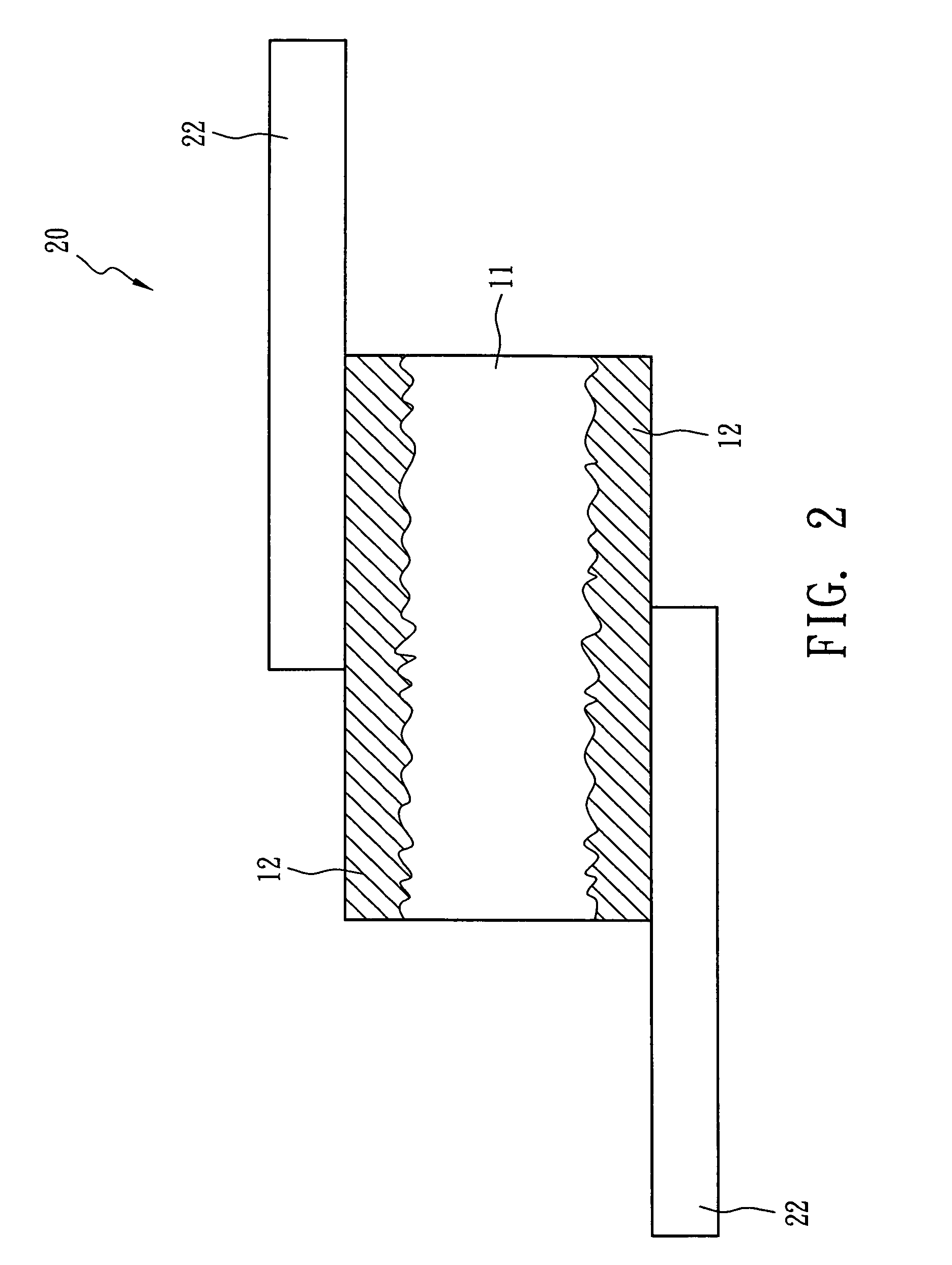Over-current protection device
a protection device and overcurrent technology, applied in the direction of non-metal conductors, batteries, cell components, etc., can solve the problems of poor control of resistance repeatability of ptc conductive materials, less uniform dispersion, and high resistance, and achieve excellent resistance, fast tripping, and low melting point
- Summary
- Abstract
- Description
- Claims
- Application Information
AI Technical Summary
Benefits of technology
Problems solved by technology
Method used
Image
Examples
Embodiment Construction
[0022]The following will describe the compositions and the manufacturing process of two embodiments (i.e., Example I and Example II) of the over-current protection device of the present invention with accompanying figures.
[0023]The composition and weight (unit in grams) thereof of the PTC material layer in the over-current protection device of the present invention and a comparative example are shown in Table 1 below.
[0024]
TABLE 1LDPE-1HDPE-1HDPE-2Mg(OH)2TiC(g)(g)(g)(g)(g)Example I12.660.50—6.0492.60Example II11.20——5.0493.60Comparative—3.1612.654.2090.90Example
[0025]In Table 1, LDPE-1 is a low-density crystalline polyethylene (density: 0.924 g / cm3; melting point: 113° C.); HDPE-1 is a high-density polyethylene (density: 0.943 g / cm3; melting point: 125° C.); HDPE-2 is a high-density polyethylene (density: 0.962 g / cm3; melting point: 131° C.); Mg(OH)2 is 96.9 wt % magnesium hydroxide mixed with 0.5% calcium oxide (CaO), 0.85% sulfamic acid (SO3), 0.13% silicon dioxide (SiO2), 0.03% i...
PUM
| Property | Measurement | Unit |
|---|---|---|
| melting point | aaaaa | aaaaa |
| particle size | aaaaa | aaaaa |
| surface temperature | aaaaa | aaaaa |
Abstract
Description
Claims
Application Information
 Login to View More
Login to View More - R&D
- Intellectual Property
- Life Sciences
- Materials
- Tech Scout
- Unparalleled Data Quality
- Higher Quality Content
- 60% Fewer Hallucinations
Browse by: Latest US Patents, China's latest patents, Technical Efficacy Thesaurus, Application Domain, Technology Topic, Popular Technical Reports.
© 2025 PatSnap. All rights reserved.Legal|Privacy policy|Modern Slavery Act Transparency Statement|Sitemap|About US| Contact US: help@patsnap.com



